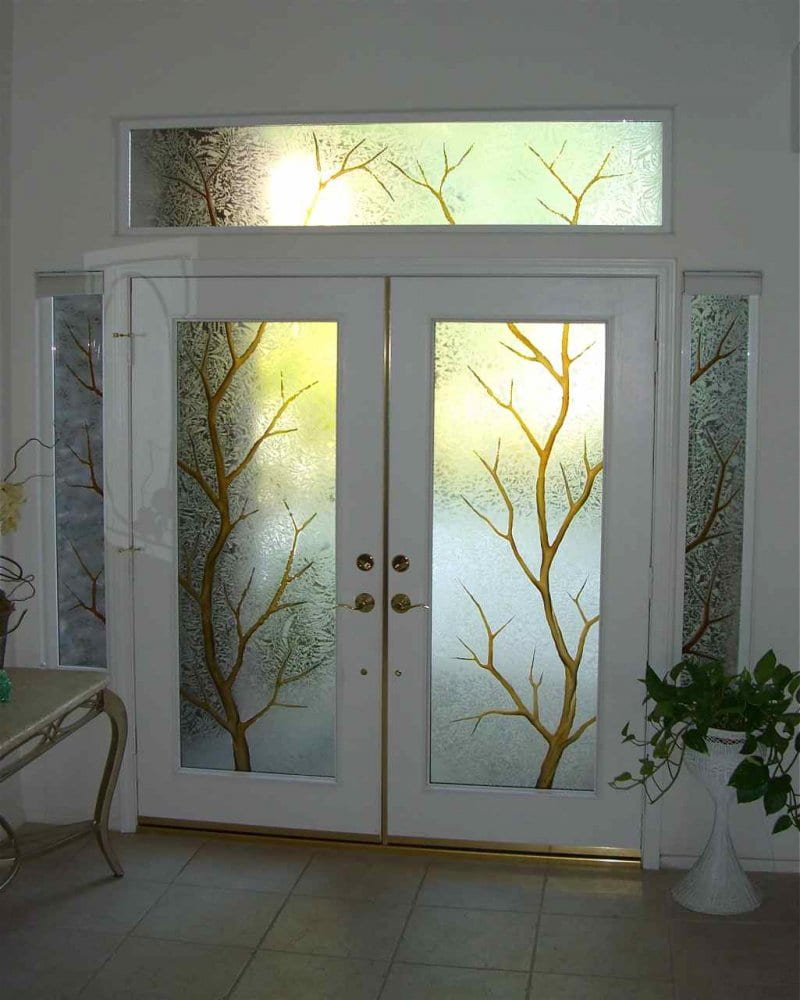In modern architecture, glass is an essential material as it provides flexibility and aesthetics to the structure. Glass is a versatile material which is used in building industry since ancient times. Glass is transparent in nature, so it can be undesirable in applications where privacy is important.
Frosted glass is one type of processed glass, which has milky translucent surface and does not allow a clear view through it. Available in various designs it is more preferred in homes as it imparts decorative look. Here we have given brief information on frosted glass, types of frosted glass, and its applications which homeowners should know before buying frosted glass for their house.

Frosted glass also called as an etched glass is a processed glass produced by rendering one surface of float glass translucent. It scatters the light passing through it and thus blurring the vision from it. There are different types of frosted glass depending upon the method of production.
Types of Frosted Glass
01. Acid Etched Glass:
The frosted appearance of the glass can be achieved by etching the glass with acid. Generally, hydrofluoric acid is used in glass etching. The acid reacts with the glass and corrodes the surface. After the etching process is done, the glass is washed thoroughly. The part of the surface on which acid was applied, becomes translucent and appears frosted. The etching is permanent and upon touching, fingerprint marks do not remain on the surface.
Acid etched glass has smooth surface just like a float glass. It can be produced in various degrees of transparency as required by the customer, such as light, moderate and opaque. By using stencils, various designs can also be impregnated on the frosted glass. This method is more economical, but as acid is used it is not considered safe for the manufacturers.

Courtesy – Glass Palace
02. Sandblasted Glass:
Sandblasted glass is produced by blasting sand or husk on the surface of the glass through a high-velocity machine. Due to high-velocity impact, abrasion of glass occurs on the point of contact. The surface is rendered rough and translucent. The degree of translucency can be altered by changing the velocity and type of sand. Designs can be created by masking the part which is to be transparent and then blasting the surface.
Sandblasted glass comes in more versatile designs as compared to acid etched glass. The frosted glass obtained by sandblasting requires more care and maintenance as it leaves fingerprint marks and hence has to be cleaned regularly. Commercially, glass is made frosted by sandblasting, as the whole sheet of glass can be easily sandblasted.

Readymade window films are also available in the market, which imparts frosted look to the glass. The frosted glass film is generally available in vinyl material, so it can be easily glued to the glass. These films are temporary cost-effective solutions for people who frequently change house due to transferable jobs. Also, people who are living in a rented house can use this option to achieve frosted windows for privacy.
Size & Thickness
Frosted glass is available in thickness ranging from 3 mm to 19 mm. The standard size of a frosted glass sheet is 1320 mm x 2140mm.
Benefits
- Due to its translucent surface, it provides privacy to interiors, simultaneously allows light transmission. Thus helps in reducing the need for artificial lights.
- It can be effectively used in places where curtains or blinds are not desired.
- Frosted glass is available in a variety of designs and colours and is used to impart decorative look to the interior of the homes. It can be combined with patterned glass for creating innovative designs.
- It can be easily cleaned and has high resistance towards scratches.
- The translucent surface of glass diffuses light uniformly and reduces the glare of light, providing comforting environment.
Application/Uses
- It is used where light is required along with obscured vision such as windows of bathrooms, restrooms, shower cubicles, shower doors, etc.
- It is used in applications where privacy is required such as office doors, glass partitions, exterior windows, cabinets, etc.
- Various companies emboss their logo into the glass by using frosted glass, to promote their brands.

Courtesy – Merayarnett

Courtesy – Hotel Esellago
- Frosted glass is used to make light bulbs as it can evenly distribute the light from the bulb’s filament across its surface area. It is also used in a photographic contact printer to distribute light uniformly.
- It is used in making ornamental windows and glassware.
- It is commonly used as a decorative glass to improve the aesthetics of a house.

